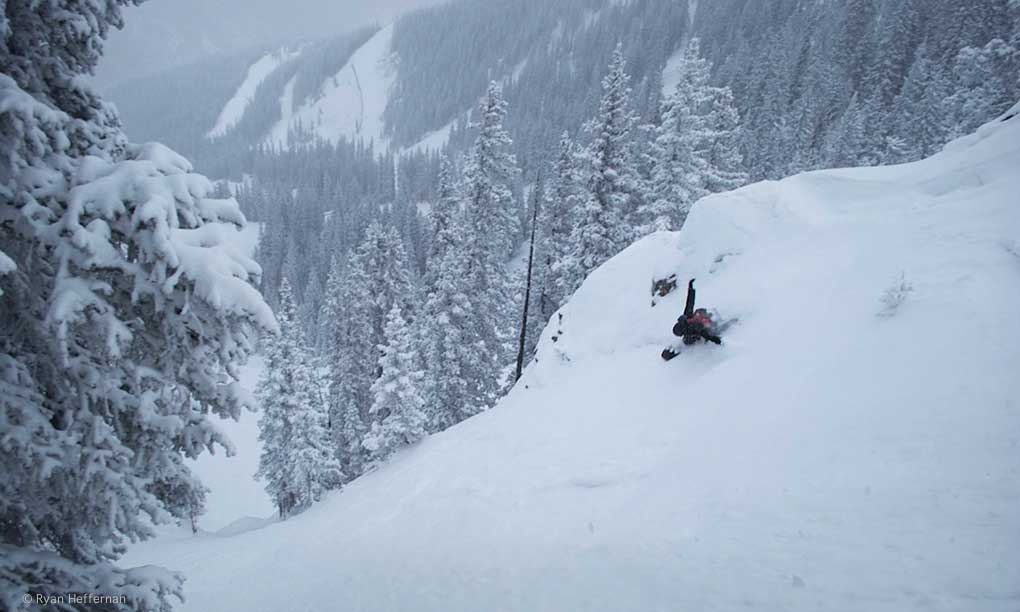The Storm provides a quick, sharp turn radius, and very little feeling of washing out. The 25-centimeter waist width was perfect for the length. It never felt too narrow, and I never felt like I would clip my toe or heel on tight turns. That produced a confidence in knowing how far to push the limits when on edge, like a car’s holding ability on corners before the tires give out.
The Storm had a high threshold for grip and board-to-snow angle before clipping my toe or heel. (Keep in mind that binding and boot differences can change this.) Honestly, I always get to a point where I feel like I will wash out, heel side. Yet the Storm was the most catch free ride I have felt in that regard. It bites and holds like no other board I’ve been on.
On one “slider” run—one move off the edges and you slide to the bottom—I dropped in carefully to avoid rocks. Once in the starting zone, I began to find confidence in the solid board, and took off. I realized I was probably going a little too fast and had to start scrubbing. The board was super smooth and easy in the pivot transition to toe side, and devoured the crunchy snow in its path like a snowcat’s tiller.
The flex of the Storm is a 7 out of 10 on Venture’s flex scale. I didn’t try to butter or jib any park features, but I did find incredible pop-ability off the nose and tail when buttering elsewhere. It’s somewhat stiff, but that helps provide the high-speed security. Simply put, this board will work for rails and hits, but not as well as a softer board.
Torsionally, one way to test a snowboard is to see how you can run toe edge in the rear while simultaneously running heel edge in the front, and vice versa. While some boards are too stiff to do this, the advantage is being able to initiate the next turn before the current turn ends. (A nice mogul move for snowboarding!) If the board is too soft, then the rider gets bounced around unnecessarily. It’s so important to be able to feel the board flex with integration among the bindings and boots, and not limit the flex to just the boots/bindings. With the Storm, I found great range of movement by being able to ride opposite edges on opposite ends of the board.

I also never had to think much about trying to stick landings—the Storm would just kind of do it. There were many times in which I was surprised to still be standing and moving downhill on the board. Certainly the shape plays a big role here, keeping the nose up and jumping out of the snow during landings. The thickness of the board and flex is also pivotal.
Durability is another constant among Venture snowboards. They are tough and built to last. Quite a few times I landed on rocks or came in contact with stumps—it’s somewhat unavoidable when giving a board a good test. I’d hit something and think, Sorry, Lisa (one of the owners of Venture), I broke your board. Yet I sent this demo piece back with only minor damage, just a few scratches that were nowhere near penetrating the sustainably harvested poplar and ash core. The strength of Venture’s materials is definitely impressive.
The speed and comfort of this board really makes for fun, safe ride. I would certainly suggest this board for any rider who wants to charge and push limits in the steeps, and have full functionality of tight technical rides.
I also believe that the Storm would be a great board to learn on. It sounds strange, but it is so stable and surprisingly easy to rotate around on its edges, the pivot factor needed in learning would be less painful.
